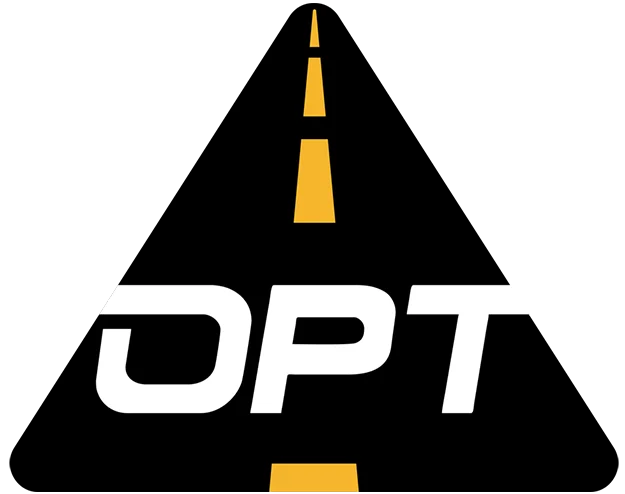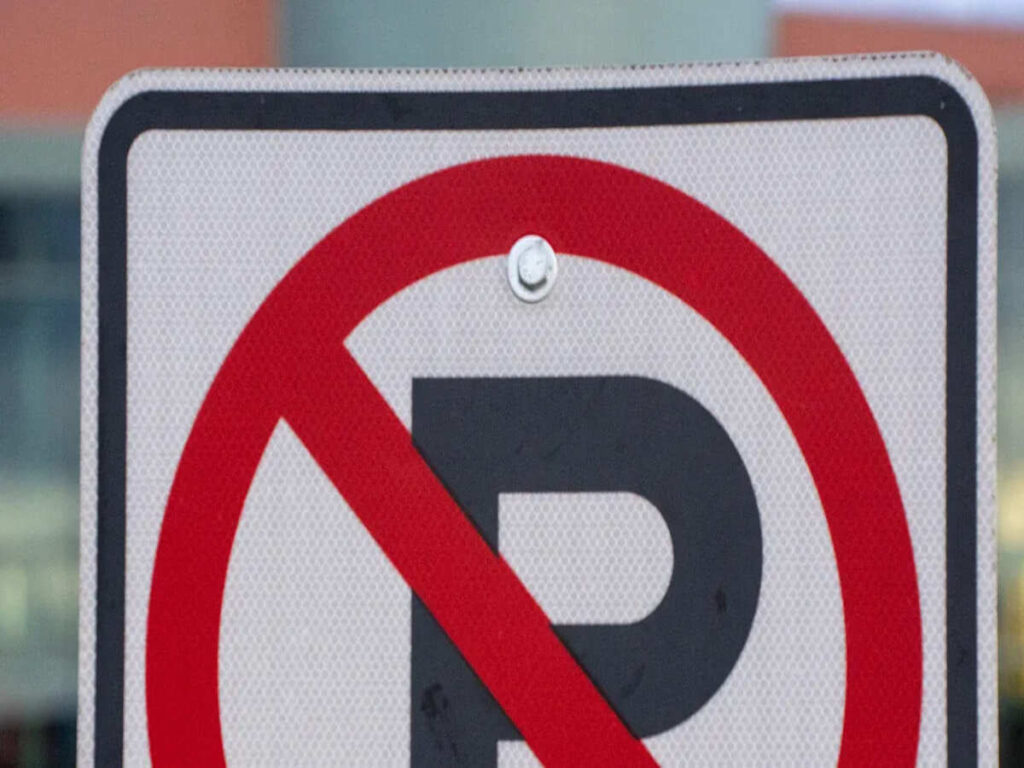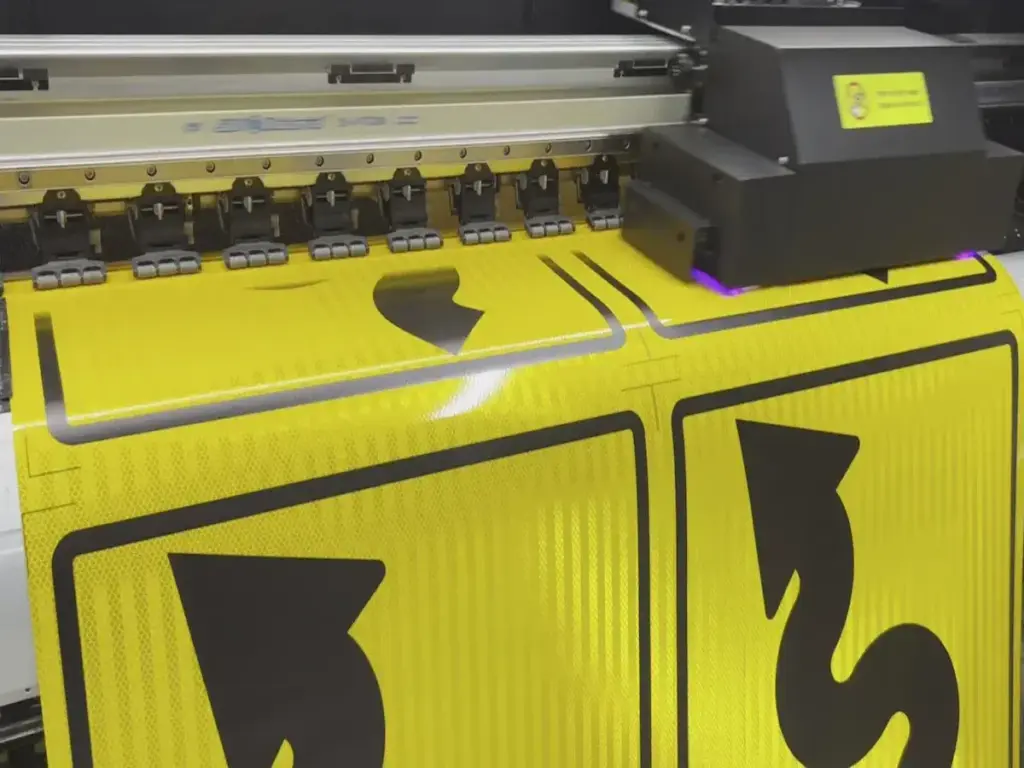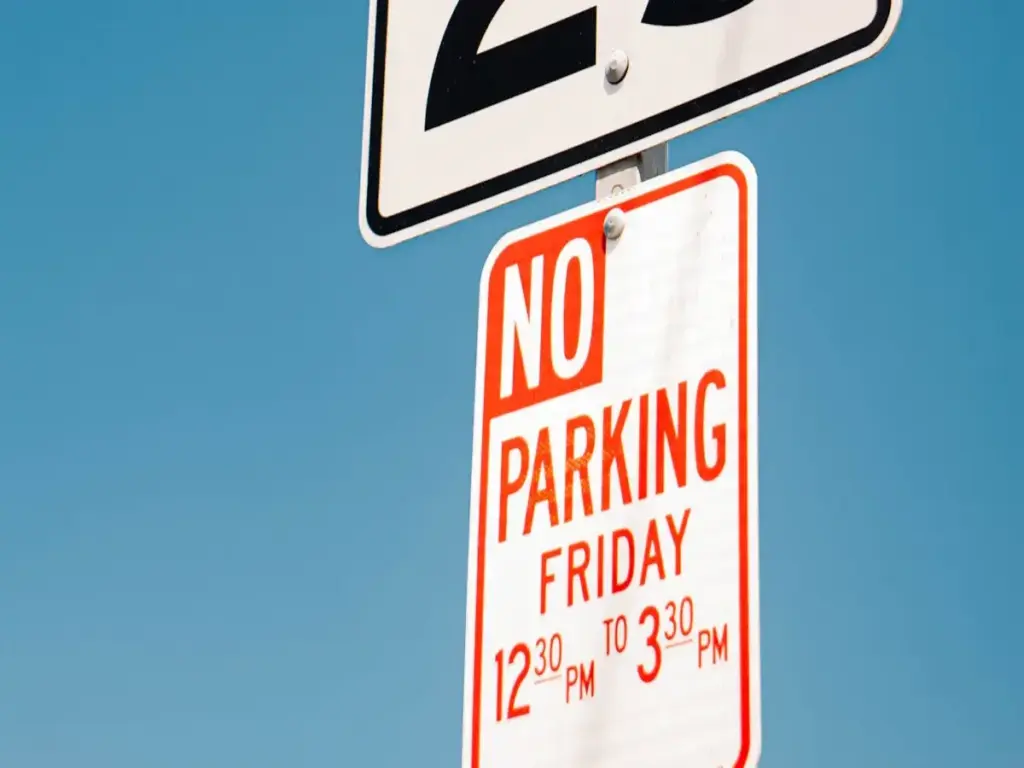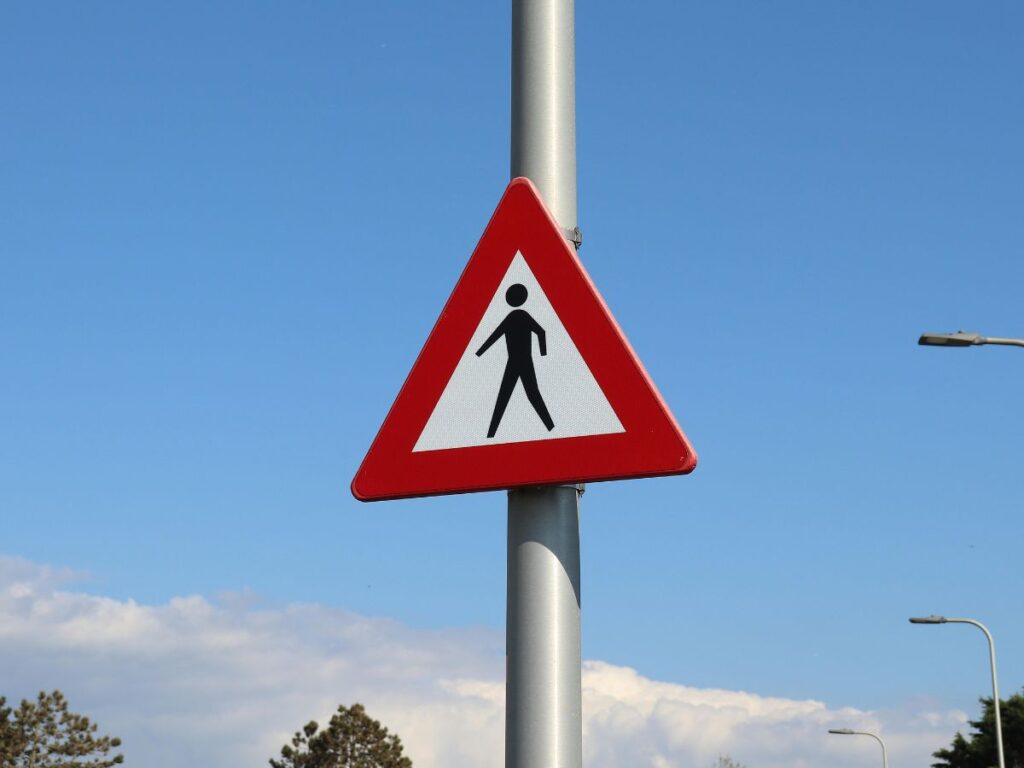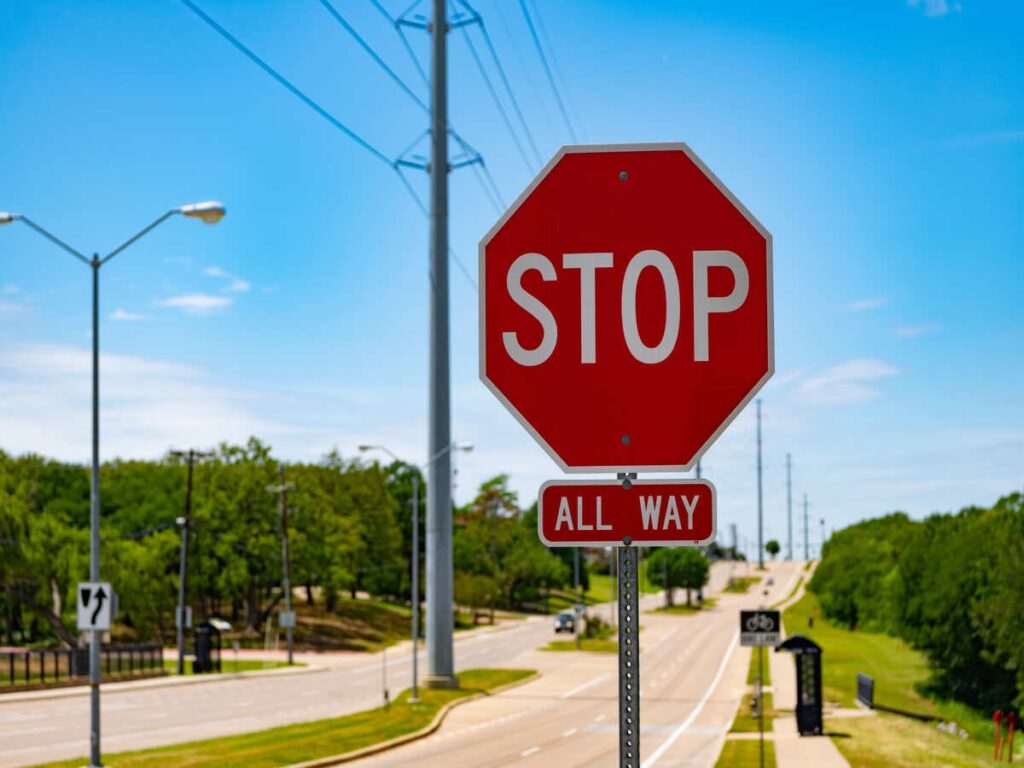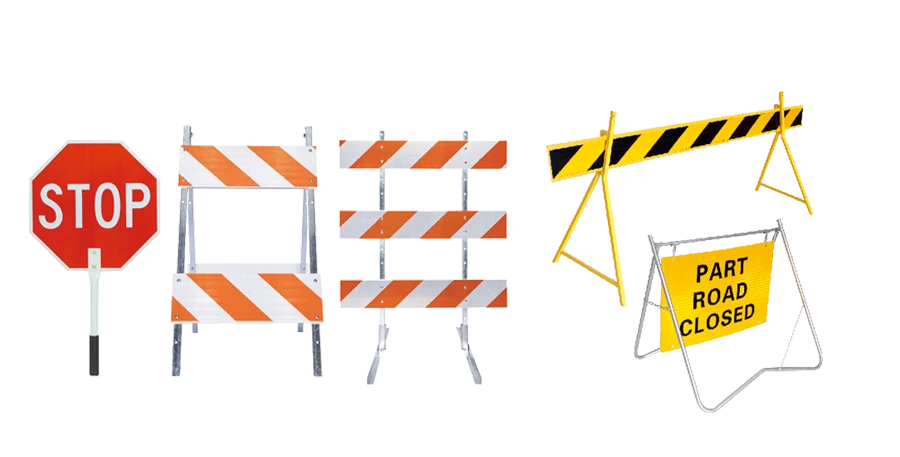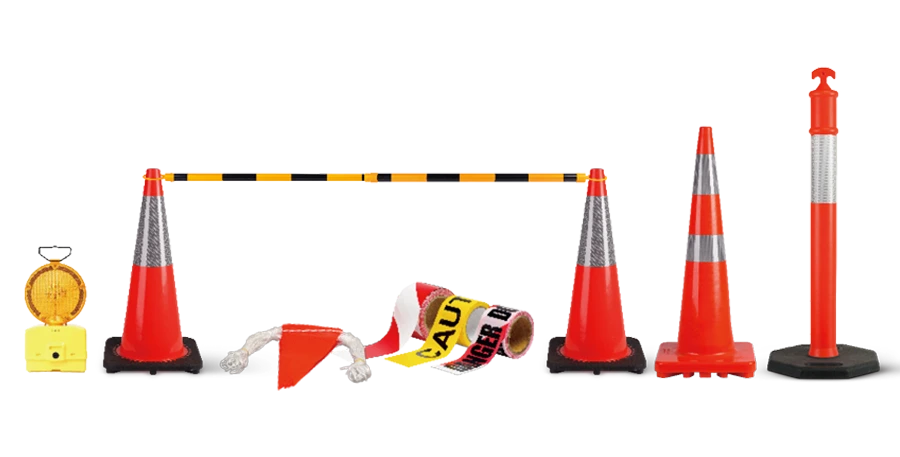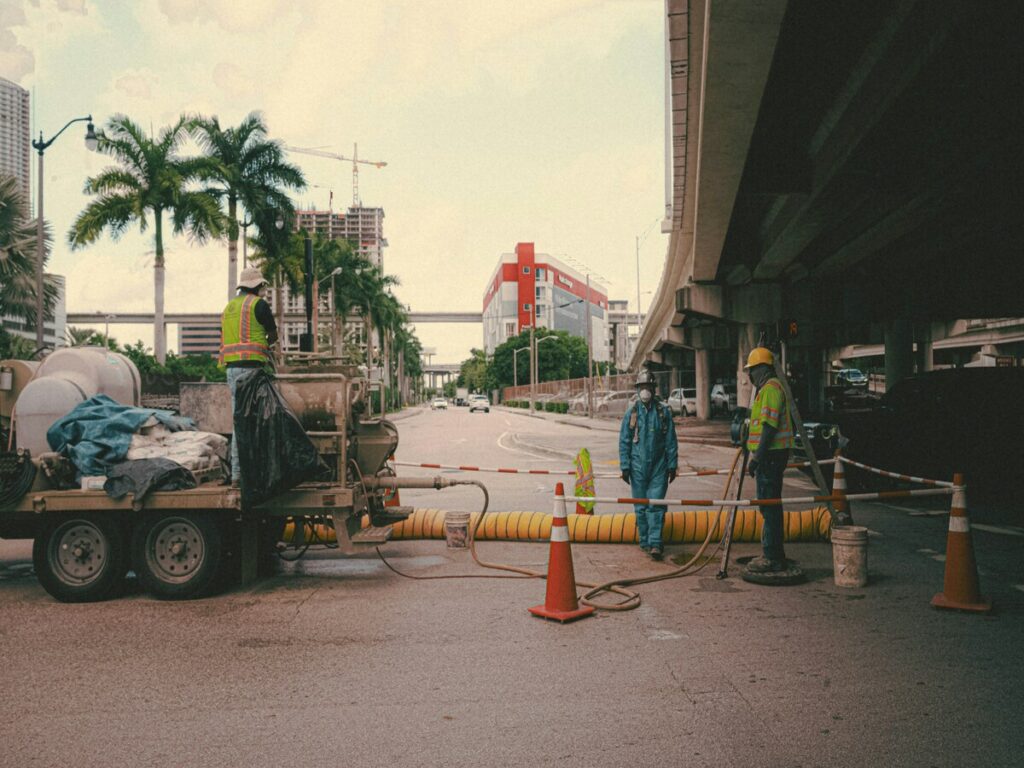
Безопасность раскопок играет жизненно важную роль в защите работников от опасных для жизни опасностей. Тренч обрушивается, водопад, и неисправности оборудования часто приводят к тяжелым травмам или погибшим. В 2022, Связанные с траншеи смерть растет 160% по сравнению с 2021, с 39 Рабочие теряют свою жизнь. Многие из этих несчастных случаев можно было бы избежать с помощью надлежащих мер предосторожности. Высокий трафик служит простым, но эффективным инструментом для снижения рисков. Они повышают видимость, направлять трафик, и Марк опасные зоны. Высокий транспортный конус может помочь водителям и работникам определить опасные зоны, предотвращение несчастных случаев и обеспечение более безопасной рабочей среды.
Раскопки и траншея: Ключевые риски и опасности
Пещеры и обрушиваются
Пещеры являются одними из самых опасных опасностей в траншеи и раскопках. Когда возникает нестабильность почвы, Стены траншеи могут рухнуть без предупреждения, Улавливание работников под тяжелым мусором. Этот тип несчастного случая часто приводит к тяжелым травмам или погибшим. Вы можете снизить этот риск с помощью защитных систем, таких как траншеи или выстрел. Наклонение траншеи вдали от места раскопок также помогает предотвратить коллапсы. Проведение тщательных оценок участков перед началом работы гарантирует, что вы определяете потенциальные опасности, такие как свободное накопление почвы или воды. Эти меры предосторожности необходимы для поддержания безопасности и защиты работников.’ жизни.
Падающие предметы и оборудование
Падающие объекты представляют значительную угрозу на участках раскопок. Инструменты, материалы, или тяжелое оборудование может попасть в траншеи, подвергая опасности работников ниже. Даже небольшой объект может привести к серьезным травмам при падении с высоты. Установление баррикад вокруг траншеи и правильное обеспечение инструментов может минимизировать этот риск. Рабочие всегда должны носить каски, чтобы защитить себя от падения мусора. Кроме того, Сохранение тяжелой техники на безопасном расстоянии от края траншеи предотвращает случайные падения. Следуя этим советам по безопасности траншеи снижает вероятность несчастных случаев, вызванных падающими объектами.
Опасная атмосфера
Опасная атмосфера в траншеях может создать опасные для жизни условия. Недостаток кислорода, Токсичные газы, как сероводород, и условия опасных воздуха часто накапливаются в ограниченных пространствах. Эти опасности могут привести к респираторным проблемам или даже без сознания. Регулярные проверки качества воздуха и надлежащая вентиляция имеют решающее значение для обеспечения безопасности траншей и раскопок. Устройства мониторинга газа следует использовать для обнаружения вредных веществ, прежде чем работники войдут в траншею. Управляя этими потенциальными опасностями, Вы можете создать более безопасную среду и предотвратить несчастные случаи, вызванные низким качеством воздуха.
Несанкционированный доступ и опасности трафика
Несанкционированный доступ к доступу и опасности трафика представляют серьезные риски на участках раскопок. Когда люди или транспортные средства входят, Они увеличивают вероятность несчастных случаев. Вы должны предпринять упреждающие шаги, чтобы предотвратить эти опасности и защитить всех на месте.
Опасности дорожного движения особенно связаны с общественными зонами. Близость транспортных средств и пешеходов создает среду высокого риска. Без надлежащего контроля, Транспортные средства могут столкнуться с работниками или оборудованием. Пешеходы могут неосознанно входить в опасные зоны. Чтобы решить это, Вы должны реализовать меры управления движением. Используйте конусы безопасности, чтобы отвлечь транспортные средства и пешеходов от опасности. Четкие вывески и барьеры могут дополнительно повысить безопасность, эффективно направляя транспортный поток.
Несанкционированный доступ также может привести к травмам или повреждениям. Любопытные свидетели или неподготовленные люди могут погрузиться в зоны раскопок, не зная о рисках. Это может привести к падению, воздействие опасных материалов, или вмешательство в постоянную работу. Вы можете предотвратить это, отметив ограниченные районы с конусами безопасности и предупреждающими знаками. Ярко окрашенные конусы действуют как визуальное сдерживание, сигнализировать опасность для всех поблизости. Размещение конусов стратегически вокруг сайта гарантирует, что несанкционированные люди не остаются.
Объединение этих мер с регулярным мониторингом усиливает безопасность сайта. Назначение персонала для контроля точек доступа может помочь вам быстро определить и решить потенциальные нарушения. Приоритет эти меры предосторожности, Вы создаете более безопасную среду для работников и общественности. Безопасность траншеи зависит от вашей способности эффективно управлять этими рисками.
Как безопасные конусы помогают повысить безопасность площадки для раскопок
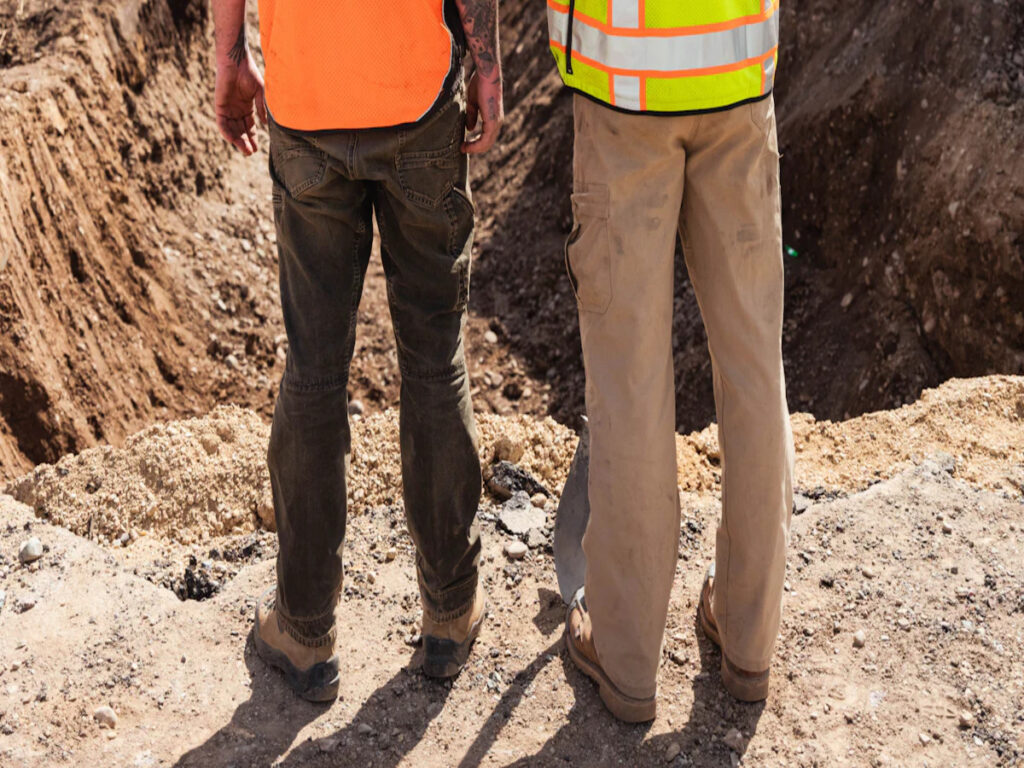
Маркировка опасных зон
Конусы безопасности играют решающую роль в маркировке опасных районов на участках раскопок. Их ярко -оранжевый цвет гарантирует, что они выделяются, Даже в оживленной среде. Эта высокая видимость помогает работникам и пешеходам быстро распознавать опасные зоны. Вы можете повысить их эффективность, сочетая их с предупреждающими знаками или флагами, которые указывают природу опасности. Например, Конусы могут отмечать нестабильную землю, открытые траншеи, или участки с тяжелой техникой. Их легкий и портативный дизайн позволяет легко их изменить по мере продвижения работы. Эта гибкость гарантирует, что все опасности остаются четко обозначенными, Снижение риска поездок, водопад, или столкновения.
Чтобы максимизировать эффективность безопасности на вашем сайте, учитывать Опеткирует дорожные конусы. Изготовленный с тяжелыми ПВХ и отражающими воротниками, Они предлагают исключительную долговечность и видимость 360 ° в любых погодных условиях. Соедините их с ОПТзнаки Модульные вложения знака для создания индивидуальных систем предупреждения, которые беспрепятственно адаптируются к развитию требований сайта.
Руководство трафиком и предотвращение столкновений
Конусы безопасности являются незаменимыми для руководства движением и предотвращением столкновений вокруг участков раскопок. Стратегическое размещение конусов устанавливает четкие границы, Сохранение работников и оборудования в назначенных областях. Это уменьшает путаницу и сводит к минимуму несчастные случаи. Вы можете использовать высокий конус дорожного движения с отражающими материалами, чтобы обеспечить видимость в условиях низкого освещения или на автомагистралях. Взвешенные шишки обеспечивают стабильность, Даже в ветреных средах.
Стратегическое размещение высокого транспортного конуса обеспечивает максимальную видимость и эффективность, Особенно в высокоскоростных или низких условиях. Выберите более высокие конусы для автомагистралей и гарантируйте, как рефлексивные материалы встречаются Оша и стандарты MUTCD.
При размещении конусов, лицом на встрече. Поддерживать минимальное расстояние 30 Ноги между конусами, чтобы создать четкий путь для водителей. Используйте дополнительные цвета безопасности, чтобы выделить препятствия или опасности. Для оптимальной безопасности, Поместите цветные конусы безопасности хотя бы 200 в ногах от рабочей зоны, чтобы обеспечить достаточное предупреждение. Эти советы по безопасности траншеи помогут вам создать более безопасную среду как для работников, так и для общественности.
Предотвращение несанкционированного доступа
Несанкционированный доступ к участкам раскопок может привести к серьезным травмам. Конусы безопасности действуют как визуальный сдерживающий фактор, Держа неподготовленных людей и свидетелей от ограниченных областей. Во время Бостон Большой Комп, Конусы эффективно держали работников на безопасном расстоянии от эксплуатационной машины. Сходным образом, в Вашингтон, округ Колумбия. Расширение метро, Конусы отделили пешеходные зоны от машин, Снижение риска травм. Их яркий цвет и стратегическое размещение делают их очень эффективными в маркировке зон ограниченного. Используя цветные безопасные шишки для изоляции опасных зон, Вы повышаете безопасность траншеи и раскопок и защищаете всех на месте.
Лучшие методы использования конусов безопасности в местах раскопок
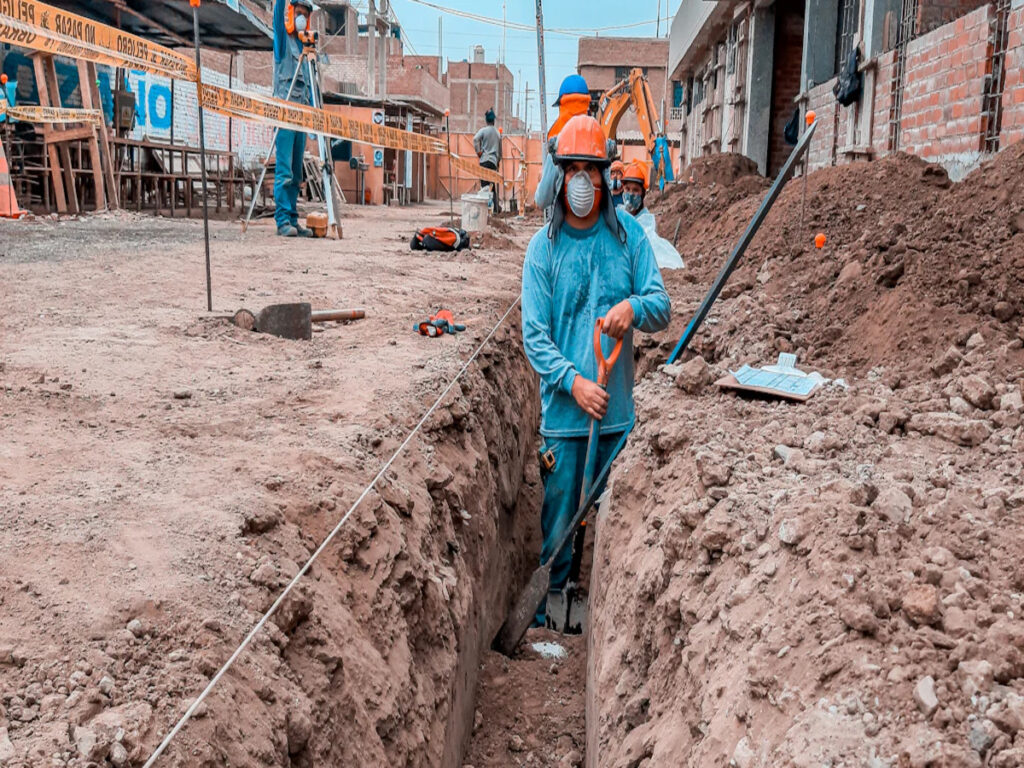
Правильное размещение конусов безопасности
Правильное размещение конусов безопасности имеет важное значение для поддержания безопасности строительной площадки. Вы должны начать с рассмотрения размера рабочей зоны. Поместите цветные безопасные конусы приблизительно 250 Ноги от начала места раскопок, чтобы обеспечить достаточно предупреждения о приближении движения. Используйте стратегию сужания, позиционируя цветные конусы безопасности 40 шагает от края сайта и постепенно перемещать их на дорогу. Это создает плавный переход для водителей.
Расстояние - еще один критический фактор. Поддерживать вокруг себя 20 Ноги между конусами, чтобы сформировать последовательный барьер. Регулируйте интервал на основе скорости трафика. Для автомагистралей, Цветные безопасные конусы должны быть распределены дальше друг от друга, в то время как городские районы требуют более близких интервалов. Всегда проверяйте макет с точки зрения водителя, чтобы обеспечить ясность. Регулярно осматривать и перемещать цветные конусы безопасности в течение дня, чтобы они были выровненными и видимыми. Эти советы по безопасности траншеи помогают снизить риск несчастных случаев и повысить общую безопасность.
Обеспечение видимости с высокими дорожными конусами
Высокие дорожные конусы значительно улучшают видимость на участках раскопок. Их высота позволяет водителям и работникам замечать их на расстоянии, Даже в плохую погоду или условия низкого освещения. Более высокие цветные безопасные конусы особенно эффективны в высокоскоростных областях, такие как автомагистрали, где видимость имеет решающее значение. Рефлексивные материалы на конусах еще больше повышают их эффективность, делая их заметными ночью..
Вы можете использовать конусы над 28 дюймов в высоту, чтобы донести серьезные опасности, такие как пещеры или области с тяжелой техникой. Эти цветные безопасные конусы действуют как визуальный сигнал для водителей, чтобы замедлить или останавливаться. Обеспечивая видимость, Вы создаете более безопасную среду как для работников, так и для общественности.
Интеграция конусов безопасности с другими мерами безопасности раскопок
Конусы безопасности работают лучше всего в сочетании с другими мерами безопасности раскопок. Используйте шишки для изоляции областей, где потенциальные опасности, такие как химические разливы или падающие предметы, может произойти. Отметьте зоны, где инструменты активно используются, чтобы напомнить работникам, чтобы они проявили осторожность. Убедитесь, что работники носят должное Личное защитное оборудование (Ст) вблизи отмеченных участков для снижения рисков травматизма.
Эффективная связь - еще один ключевой элемент. Регулярные дискуссии и четкие вывески Держите всех в курсе протоколов безопасности. Вы также можете использовать технологию, такой как Наземный радар, Чтобы выявить подземные коммунальные услуги и предотвратить несчастные случаи. Аварийное планирование обеспечивает быстрые ответы на неожиданные ситуации. Интегрируя шишки с этими показателями, Вы укрепляете свой план безопасности и защищаете работников от потенциальных рисков.
Обучение и соответствие безопасности работников
Обучение работников по траншеи и безопасности раскопок
Правильное обучение безопасности необходимо для защиты работников от потенциальных опасностей на раскопках. Вы должны провести комплексное обучение по безопасности, которое охватывает риски для траншеи, нестабильность почвы, и защита от пещеры. Работники должны понимать, как выявлять опасности и эффективно реализовать защитные системы.
Ключевые компоненты успешной программы обучения безопасности включают:
- Образование по безопасному доступу и методам выхода, например, использование лестниц или пандусов.
- Обучение по обнаружению опасной атмосферы и предотвращении рисков, связанных с накоплением воды.
- Инструкция по правильному использованию личного защитного оборудования (Ст).
- Регулярные курсы для повышения квалификации и протоколы инструментов разговоры о усилении протоколов безопасности.
Вы также должны подчеркнуть предотвращение травм и соблюдение нормативных требований. Рабочие должны научиться ежедневно проверять траншеи, Проверьте погодные условия, и избегать работы под приподнятыми нагрузками. Обнаруживая работниками этими навыками, Вы снижаете вероятность несчастных случаев и повышаете безопасность работников.
Придерживаясь стандартов OSHA для мер безопасности раскопок
Соответствие Стандарты OSHA обеспечивает более безопасную рабочую среду и минимизирует риски. OSHA предоставляет четкие рекомендации по безопасности раскопок, включая классификацию почвы, Защитные системы, и безопасный доступ и выход.
| Стандартный компонент OSHA | Описание |
|---|---|
| Классификация почвы | Руководство по определению стабильности почвы и выбора соответствующих мер. |
| Наклонение и скамейка | Методы предотвращения коллапсов путем формирования траншейных стен. |
| Древесина Ширинга | Использование деревянных опоров для стабилизации стен траншеи. |
| Алюминиевый гидравлический шарнинг | Гидравлические системы для поддержки траншеи. |
| Выбор защитных систем | Критерии выбора подходящих защитных мер. |
Вы должны внедрить эти стандарты, поддерживая траншеи, чтобы предотвратить коллапсы и маркировку подземных коммунальных услуг, чтобы избежать повреждений. Барьеры могут предотвратить падение на раскопки, В то время как надлежащее насосное оборудование управляет накоплением воды. Всегда гарантируйте, что материалы и транспортные средства остаются на безопасном расстоянии от краев траншеи.
Придерживаясь этих стандартов, Вы создаете более безопасную среду для работников и снижаете риск аварий. Регулярные проверки обучения и соответствия убедитесь, что ваша команда остается в курсе последних протоколов безопасности.
Рабочие раскопки и траншеи представляют несколько критических опасностей, которые вы должны решить, чтобы обеспечить безопасность:
- Пещеры угрожают работникам’ Жизнь и требует защитных мер, таких как траншеи или наклонные стены.
- Опасная атмосфера, в том числе недостаток кислорода, спрос на ежедневные проверки и надлежащая вентиляция.
- Падающие материалы и оборудование представляют риск серьезных травм, Сделать безопасное хранение и баррикады необходимым.
- Ударные подземные коммунальные услуги могут привести к утечке газа или электрическим точкам, Таким образом, связаться с коммунальными компаниями жизненно важно.
Конусы безопасности играют ключевую роль в смягчении этих рисков. Их яркие цвета и стратегическое размещение знака опасных зон, направлять трафик, и предотвратить несанкционированный доступ. Интегрируя пластические конусы безопасности с другими мерами, такими как защитные системы и надлежащая вентиляция, Вы создаете более безопасную рабочую среду.
Упреждающее планирование является ключом к безопасности раскопок. Оценить стабильность почвы, Разработать план безопасности, и сотрудничать с экспертами для решения потенциальных рисков. Эти шаги, в сочетании с пластиковыми безопасными конусами, Обеспечить защиту работников и предотвращение несчастных случаев.
Приоритетным эти меры, Вы защищаете жизнь и поддерживаете безопасные места для раскопок.
